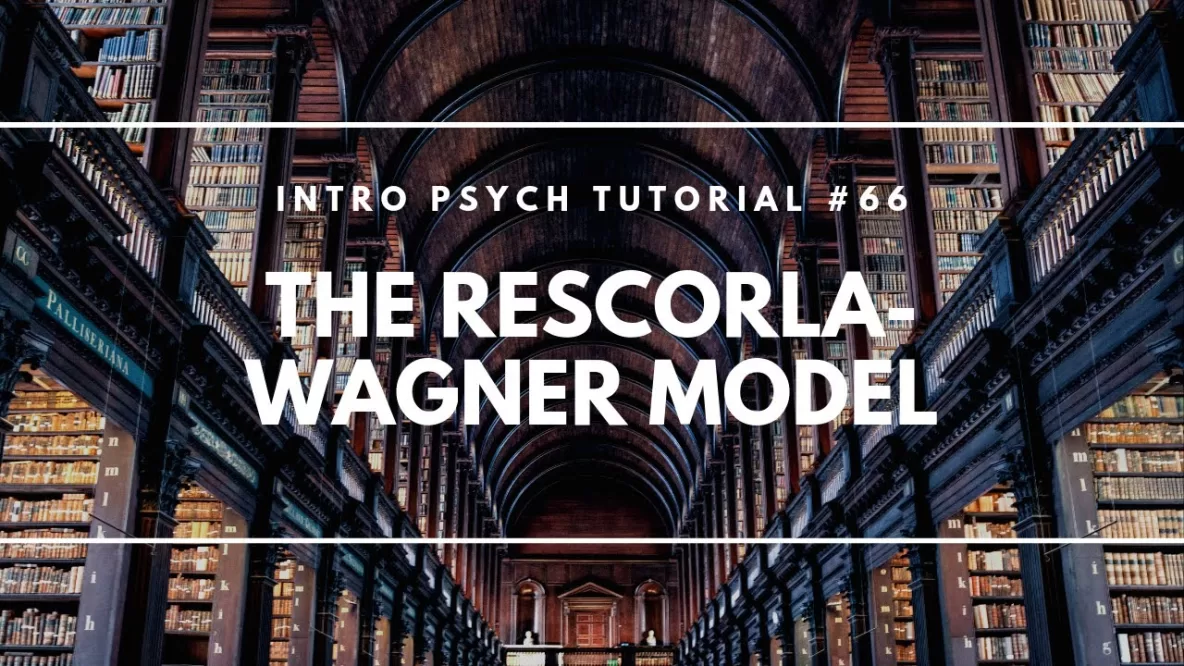In this video I explain the basic idea behind the Rescorla-Wagner model or contingency model of classical conditioning proposed by Robert Rescorla and Allan Wagner. This model suggests that the reason Pavlov’s dogs associated the bell (rather than some other stimulus) with food was that it was salient and served as a reliable predictor of food.
Don’t forget to subscribe to the channel to see future videos! Have questions or topics you’d like to see covered in a future video? Let me know by commenting or sending me an email!
Check out my psychology guide: Master Introductory Psychology, a low-priced alternative to a traditional textbook: http://amzn.to/2eTqm5s
Video Transcript:
Hi, I’m Michael Corayer and this is Psych Exam Review. In this video I’m going to briefly describe the Rescorla-Wagner model of classical conditioning, also known as the contingency model of classical conditioning. This was put forth by Robert Rescorla and Allan Wagner.
Now since you’ve learned a little bit more about classical conditioning and operant conditioning, we can return to Pavlov’s original experiments and we might have some questions. We might think, what if the dog was looking at Pavlov before the food was presented? Why wouldn’t the dog salivate to Pavlov’s presence? Why wouldn’t he be salivating as soon as Pavlolv came into the room and started setting up the bells and metronomes and lights?
What if the dog was just looking at the clock on the wall, why wouldn’t he make that association with the presentation of food? Or based on what you’ve learned about operant conditioning, you might wonder “what if the dog wagged his tail just before the food was presented? Wouldn’t this serve as reinforcement for this behavior of wagging the tail and so the dog would now wag his tail all the time?
These are good questions to ask. The way that the contingency model of classical conditioning tries to answer this is that the food is a reliable predictor. So when we asked this question of “why is it that the bell is what’s causing the salvation?” “why didn’t the dogs salivate to other stimuli that were also in the room?”. One idea is that the food being presented was reliably predicted by the bell. In other words, during the conditioning process, the bell was always followed by the food. So the idea is the bell is a reliable predictor.
Whereas other stimuli that were also in the room were not as reliable. In other words, the dog might look at Pavlov and no food is presented and sometimes he looks at Pavlov just before the food is presented but it’s not as reliable. Whereas when the bell was being conditioned, it was every time the bell rang food was always presented.
The second reason why the bell is going to be more likely to be associated with the food is that it’s not just that it’s a reliable predictor but that also it’s salient. So what do I mean by that? When we say that a certain stimulus is salient, it means that it captures the attention. We know that the dog was going to have his attention, at least briefly, captured by the sound of the bell. It’s a salient stimulus.
This is why it’s going to be easier to teach the dog to salivate to a bell rather than some other stimulus like the clock that’s also in the room. Or if Pavlov were to scratch his arm before the food was presented. Even if that was a reliable predictor, if he did it every time, it’s less likely that the dog’s going to paying attention to that so it’s going to be harder for the dog to learn that association. Whereas the bell is salient, it immediately draws the dog’s attention and then it serves as a reliable predictor that food is coming.
Because of these two things, it’s easier for the dog to learn this association. This shows is that this classical conditioning isn’t so much about just learning associations between things but learning what these associations mean and how they allow the dog to make predictions and have expectations about what’s going to happen in the world.
Ok, I hope you found this helpful, if so, please like the video and subscribe to the channel for more.
Thanks for watching!

